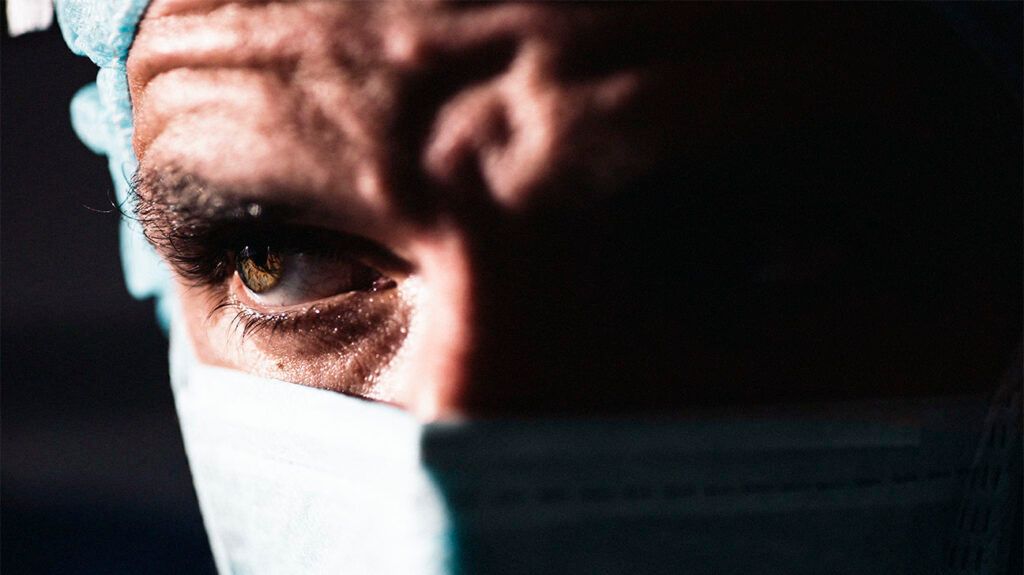Triple fusion neck surgery, or three-level cervical fusion, is a major surgical procedure that addresses certain neck issues. It involves fusing multiple vertebrae in the cervical spine, eliminating movement between the bones.
The cervical spine refers to the top portion of the spine that forms the neck. A series of
Some conditions that triple fusion surgery can help treat include spinal degeneration, spinal cord and nerve compression, fractures, and certain neck issues when other treatments do not work.
The procedure causes the fused bones to heal into a single piece or mass. Some people may require revision surgery after their initial surgery.
This article will explain triple fusion neck surgery, including when it is necessary, recovery, and complications. It also answers some common questions.

Three-level cervical fusion can help treat various neck conditions, many of which occur due to spinal degeneration. It fuses three vertebrae in the cervical spine. The result is a single piece of bone that prevents movement between the vertebrae.
A surgeon can perform the procedure through the front or back side of the neck. Fusions through the front of the neck are
An anterior cervical diskectomy and fusion (ACDF) approaches the neck from the front. Generally, it involves removing the disks between the vertebrae and filling the emptied spaces with bone grafts or spacers to allow for fusion.
Bone grafts can come from the following:
- the person’s own body
- special artificial materials
- a cadaver
A posterior cervical fusion approaches the neck from the back and also uses bone grafts.
The main difference between three-level and single-level fusion is the number of vertebrae undergoing fusion.
In a single-level fusion, surgeons join two adjacent vertebrae, while three-level fusion involves joining three vertebrae. Single-level fusion requires removing one disk. On the other hand, three-level fusion requires the removal of multiple disks.
Typically, single-level fusion has links to fewer complications.
Doctors may recommend three-level cervical fusion for certain conditions affecting the neck.
Someone may be a candidate for this surgery if conservative treatments, such as physical therapy, steroid injections, anti-inflammatory drugs, and neck immobilization, are ineffective.
Some conditions that three-level cervical fusion can treat include:
- degenerative disk disease
- cervical stenosis, or narrowing of the spinal canal
- spinal cord compression, known as cervical myelopathy
- compressed or pinched nerves in the neck, known as cervical radiculopathy
- herniated disk
- fractions, dislocations, or deformities
Ultimately, a doctor will help someone decide whether they need cervical fusion surgery and which type is best for them.
Recovery from cervical spine surgery depends on the individual and their surgeon. People can expect a short hospital stay after surgery, although the length can vary.
It generally takes 6–12 months for bones to fuse after a spinal fusion surgery.
What to avoid after surgery
A surgeon may instruct someone to wear a cervical collar and restrict them from doing activities or lifting weights for a while. As symptoms improve, people will find they can perform usual activities.
Physical therapy may begin as soon as 6 weeks after surgery. Additionally, according to a
A
Posterior cervical fusions involve cutting through muscles in the back and may have different outcomes than ACDFs. A 2022 study found that people undergoing multilevel posterior cervical fusion had a higher risk of experiencing certain complications and needing reoperation than those getting ACDF.
Cervical fusion surgery is fairly common. Doctors perform over 130,000 ACDFs annually in the United States, and single-level ACDFs have a low risk of complications.
Individual health factors and the number of fusion levels can affect the risk of complications.
Some complications of spinal fusion include:
- bleeding
- infection
- bone graft site pain
- recurring symptoms, such as compression of the spinal cord (myelopathy) or the root nerve (radiculopathy)
- damage to the nerves
- blood clots
- pseudoarthrosis, which occurs when bones do not sure correctly
Below are answers to common questions about neck fusion surgery:
How long does it take to recover from neck fusion surgery?
It generally takes 6–12 months for the bone to become solid following spinal fusion surgery. However, recovery depends on many factors, such as the number of fusions, an individual’s health, and whether someone needs additional surgery.
What is the success rate of three-level cervical fusion?
Evidence suggests a majority of three-level cervical fusions are effective. According to a study from 2022, the reoperation rate for three-level ACDF was 15% within 5 years of surgery.
How serious is neck fusion surgery?
While ACDFs are a common procedure, neck fusion surgery has potential complications, and recovery takes months. The risk of complications increases with the number of fusions necessary, but the mortality rate is
Triple fusion neck surgery, or three-level cervical fusion, fuses vertebrae in the neck at three levels. The area should heal into one piece, with no movement between the fused vertebrae.
Spinal degradation can lead to many neck issues. If more conservative treatments are ineffective, a doctor may recommend cervical fusion surgery for conditions. These include compressed spinal cord or nerves, cervical stenosis, degenerative disk disease, herniated disk, fractures, dislocations, or structural changes.
After a spinal fusion, it may take 6–12 months for fused bones to become solid. Recovery may involve physical therapy and activity limitations that gradually lessen. Complications may include bleeding, infection, nerve damage, amongst others.
Sometimes, a person may require revision surgery.
